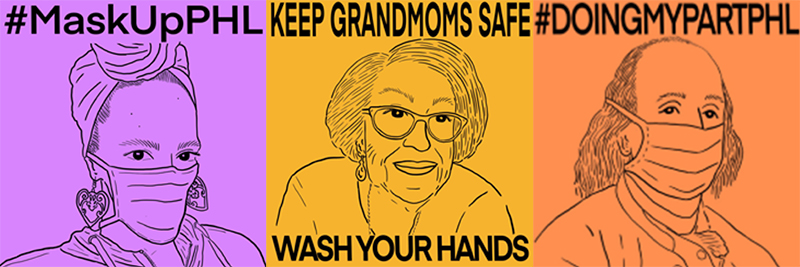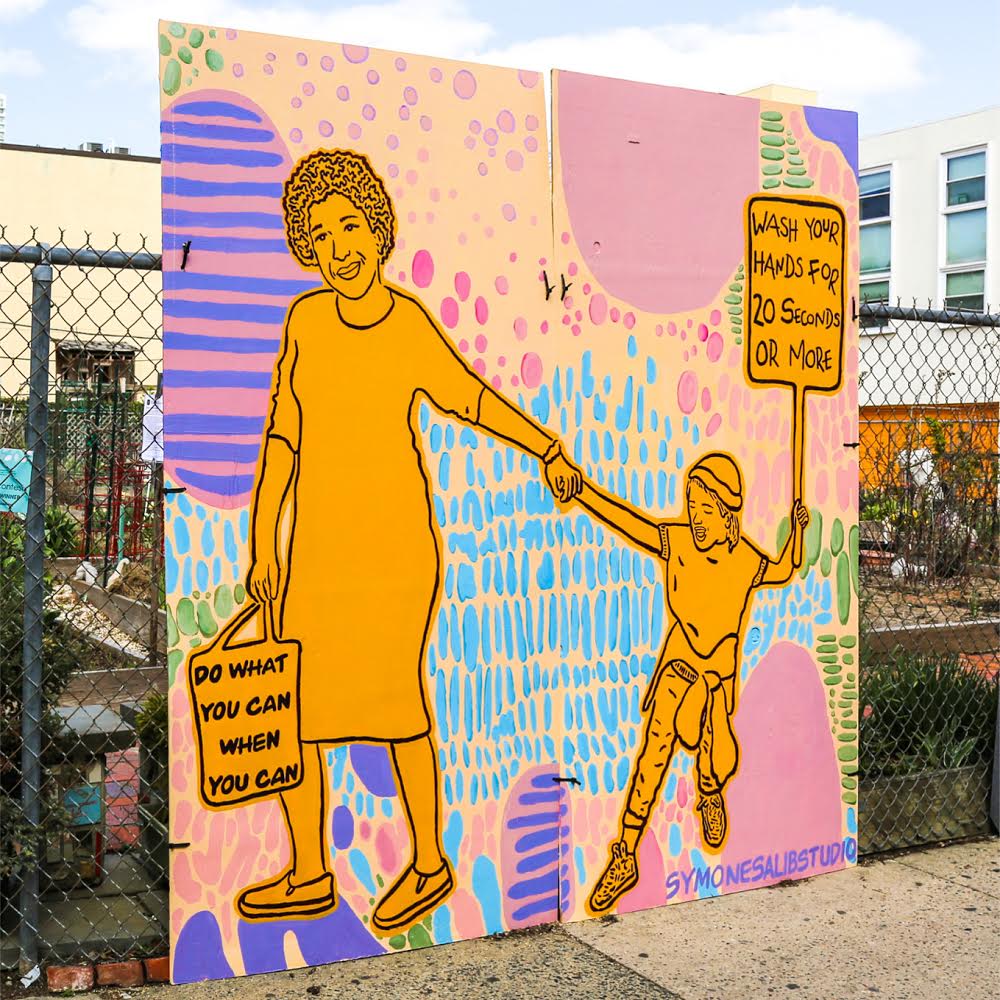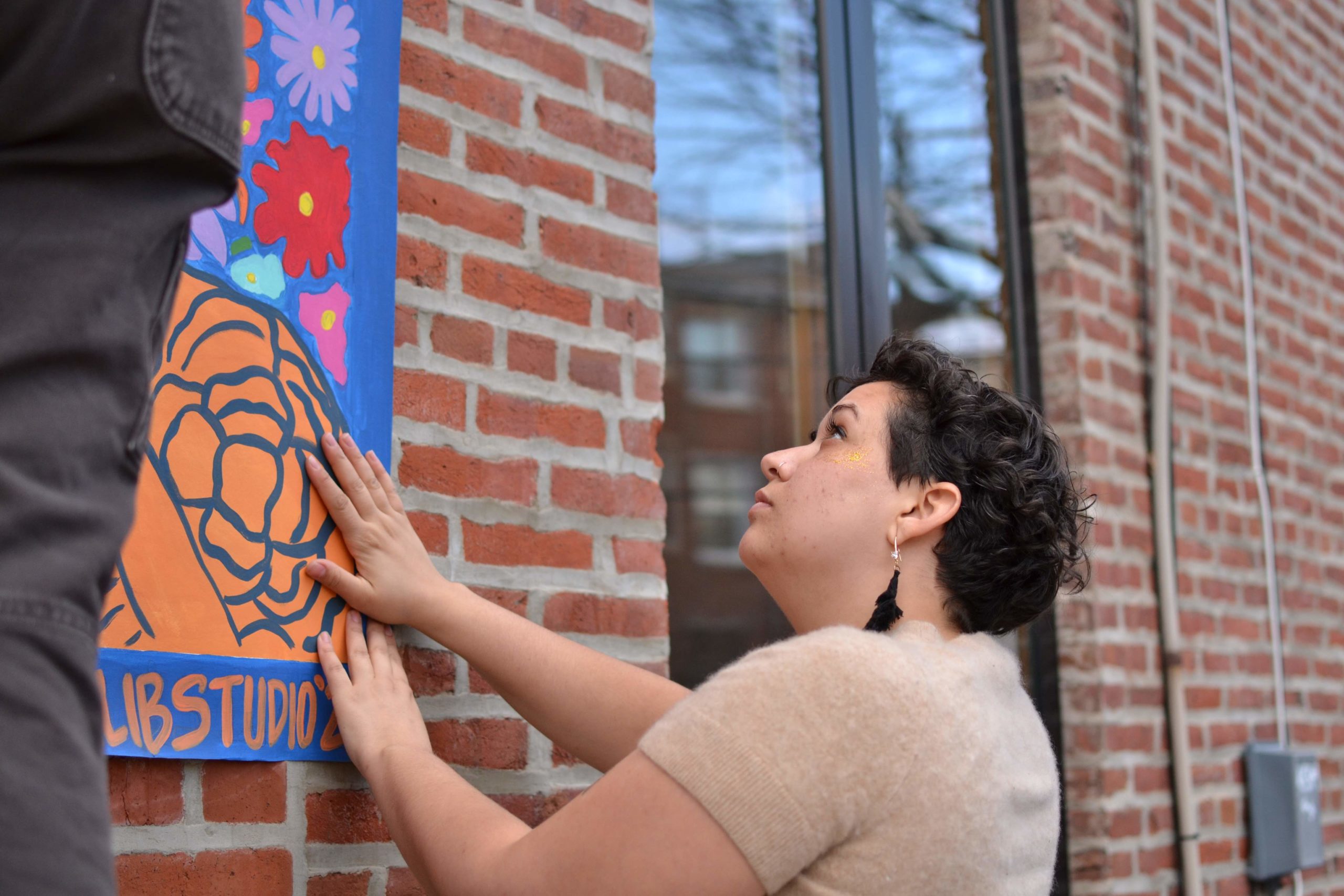Since Philadelphia’s first COVID-19 patient was identified in mid-March, the city has recorded over 30,000 cases. The problem has become familiar in cities around the world: While instructions for slowing the spread of the virus, such as to remain six feet apart from others, are simple to understand, they are difficult to implement. How to get people to pay closer attention? A new partnership between the Philadelphia Department of Public Health and Mural Arts Philadelphia—with support from the Partnership for Healthy Cities—successfully launched an eye-catching platform for a public art campaign that promotes safe physical distancing and COVID-19 prevention.

Leveraging the use of art as strategic and effective communication, artists are creating brightly-colored posters and “space pads,” temporary vinyl floor tiles, for placement in essential businesses and other high-trafficked areas across the city. As of late July, the partnership placed 646 space pads and 235 posters in over 80 locations, and in seven languages: English, Spanish, Mandarin, French, Arabic, Russian and Vietnamese. The project features unique artwork from more than twenty artists; among the cohort is Cuban-Egyptian painter and street artist Symone Salib.
Since embarking on a career in art, Symone wanted to only share messages of importance through her pieces. Her work aims to highlight the lives and stories of the people of Philadelphia, especially people of color. We spoke to Symone about her work with Mural Arts and the role of art in advancing public health action during the COVID-19 era.

Q: Can you tell us about the inspiration behind the public health pieces you created for the Mural Arts project?
Because my work is in people’s regular commute, I want it to spark reflection and conversation among those who see it. Community and representation are really important to me, as is being smart about the words being used. The most important aspect of this project was to portray people in the community so that they would really relate to the messaging on COVID-19 safety. Benjamin Franklin was to be a bit funny, but another is of Philadelphia native and Ursula Rucker. In this way, I see people paying attention to the space pads in a way that dry public health warnings fail to do. Having the space pad visual on the ground also removes a lot of the individual discomfort of asking others to respect your space.
What visual elements and messages do you think are most effective in influencing people’s behavior around COVID-19?
Valid and informative communication is the most important part here, and to make art that is informative during this time can be especially powerful. To see something that is visually stimulating and joyful can go much farther than the anxiety produced by the 24-hour news cycle. I’m really glad to be able to use my art to inform my community on how to stay safe and healthy.
What do you see as some of the challenges in your community regarding COVID-19, and what role does your art play in addressing these?
One of the biggest issues I’ve seen is around mask-wearing, and specifically non-compliance with wearing them. I think a lot of people view face masks as an individual issue, as opposed to something that affects the entire community and city, and so I would like to make another piece about community to address this. Through art, perhaps we can make a stronger argument and ask our neighbors to consider new rules like masks in a larger sense.
Tell us more about other installations of yours which combine art and public health.
Besides the space pads, I also worked on a hand-washing installation with Mural Arts and the Broad Street Ministry, an organization that works with people experiencing homelessness in the city. Once Philadelphia imposed restrictive measures to contain COVID-19 early into the local outbreak, there were no places—whether private spaces like restaurants or public institutions like libraries—in which homeless residents could use facilities. This was especially dire given the emphasis on washing your hands to reduce risk of infection. So together we created a range of handwashing stations paired with messaging and placed them in different parts of the city with high foot traffic.
Are you interested in producing more public health art?
Yes! It’s an especially important issue at hand right now and working with Mural Arts over the last year has been a dream come true. I can’t wait to produce more art that not only helps others through the current challenge of COVID-19, but also builds community along the way.
About the Partnership for Healthy Cities:
The Partnership for Healthy Cities is a prestigious global network of cities committed to saving lives by preventing noncommunicable diseases (NCDs) and injuries. Supported by Bloomberg Philanthropies in partnership with WHO, as well as Vital Strategies, this initiative enables cities around the world to deliver a high-impact policy or programmatic intervention to reduce NCDs and injuries in their communities. For more information, visit: https://partnershipforhealthycities.bloomberg.org/
The Partnership for Healthy Cities COVID-19 Response is part of the $40 million Bloomberg Philanthropies COVID-19 Global Response Initiative. By collaborating with the WHO and Resolve to Save Lives, an initiative of Vital Strategies, the Partnership for Healthy Cities COVID-19 Response is working hand-in-hand with the world’s leading experts on epidemic prevention. Visit the PHC COVID-19 Response Center for technical tools and other information for cities fighting the pandemic.
